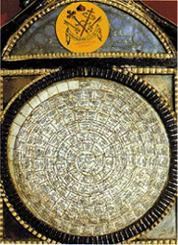 |
OUR FAITH
 The foundation of the Syriac Orthodox Church of Antioch can be traced back to the very dawn of Christianity. It is the first established church in Christendom, which gathered converted Jews and Gentiles in the name of our Lord Jesus Christ, and second Church after that of Jerusalem. The foundation of the Syriac Orthodox Church of Antioch can be traced back to the very dawn of Christianity. It is the first established church in Christendom, which gathered converted Jews and Gentiles in the name of our Lord Jesus Christ, and second Church after that of Jerusalem.
According to ecclesiastical history and tradition, St. Peter the Apostle established a bishopric in Antioch and became its first bishop and was succeeded by Evodius for the converted Jews and St. Ignatius the Illuminator for the converted Gentiles. After the martyrdom of St. Peter in Rome, was succeeded by St. Evodius and St. Ignatius respectively. Likewise, St. Peter was succeeded by a line of distinguished Patriarchs, most of whom amazed the world with their sanctity, wonderful writings and other accomplishments in many fields.
The See of Antioch then becomes the first, the oldest, and the most famous Church in Christianity. It was the foundation of the Christianity in the East and mother of the gentile churches and the headquarters of Christianity in Asia. It’s proud to be the origin of the word Christian; it was in Antioch, after all, that the followers of Jesus Christ were called Christians as we are told in the New Testament, “The disciples were first called Christians in Antioch” (Acts 11:26).
 Today the church is spread around the globe spanning universe countries headed by a patriarch residing at Damascus in Syria. It produced a line of succession beginning with Apostle Peter which continues to this day in the Syriac Orthodox Church. The line of 122 Patriarchs spans twenty centuries, from St. Peter the Apostle to Moran Mor Ignatius Aphrem II, the present Patriarch of Antioch and all the East, the Supreme Head of the Universal Syriac Orthodox Church. Today the church is spread around the globe spanning universe countries headed by a patriarch residing at Damascus in Syria. It produced a line of succession beginning with Apostle Peter which continues to this day in the Syriac Orthodox Church. The line of 122 Patriarchs spans twenty centuries, from St. Peter the Apostle to Moran Mor Ignatius Aphrem II, the present Patriarch of Antioch and all the East, the Supreme Head of the Universal Syriac Orthodox Church.
The Syriac Orthodox Church is quite unique for many reasons. Firstly, it presents a form of Christianity, which is Semitic in nature, with a culture not far from the one Christ himself experienced. Secondly, it employs in its liturgy the Syriac language, an Aramaic dialect akin to the Aramaic spoken by Christ and the Apostles. Thirdly, its liturgy is one of the most ancient, and has been handed from one generation to another. Fourthly, and most importantly, it demonstrates the unity of the body of Christ by the multiethnic nature of its faithful: A visit to your local Syriac Orthodox Church in Europe or the Americas would demonstrate, for example, the blend of Near Eastern and Indian cultures in the motifs and vestments of clergy. The Syriac Orthodox faithful today live primarily in Middle Eastern countries and the Indian State of Kerala, with many communities in the diaspora.
| |
|